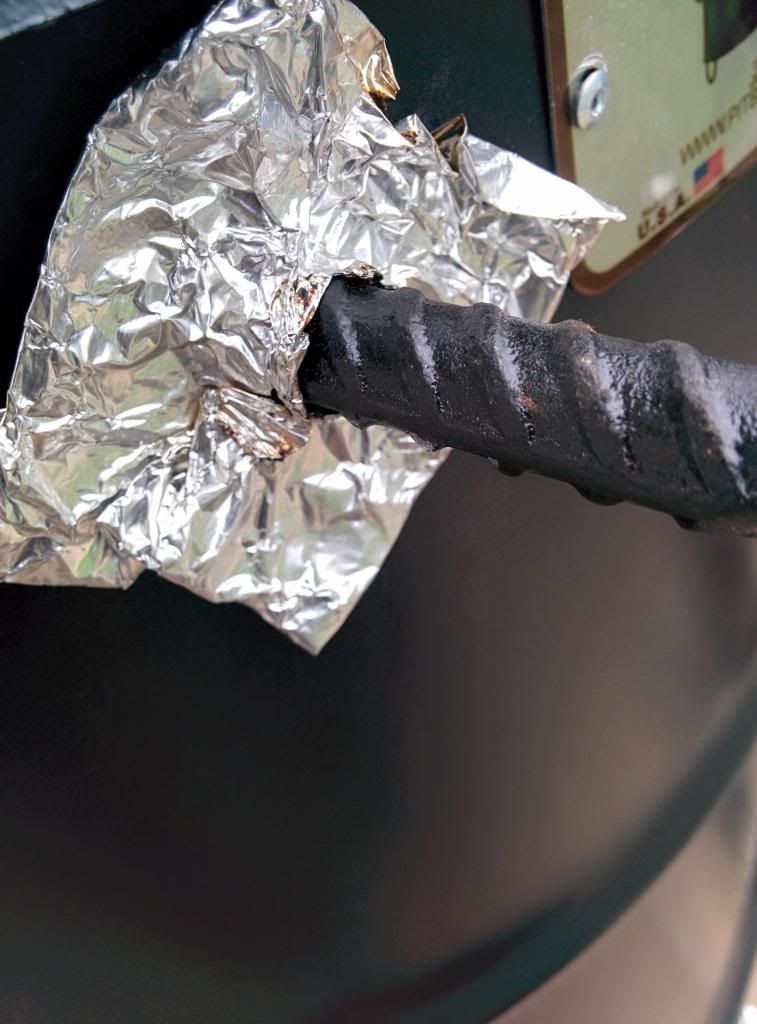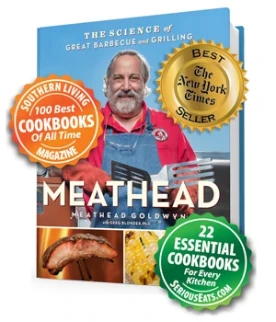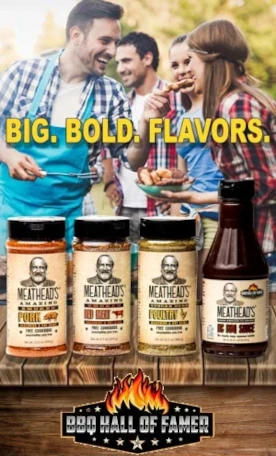PitBoss David was kind enough to read a response I gave to someone on the freebie side of the house last night, and suggested I share this in The Pit. Honestly, I'm not sure it's in the same league as Kathryn's excellent treatise, but I'll share it anyway.
A reader asked: "Why did you cook your baby back ribs at 220 degrees...60 degrees lower than the designed temperature of the PBC?" My reply below:
Paul, fasten your seatbelt...this won't be brief. (But I promise to answer your questions further below.)
I'm learning a TON about temperature management with the PBC. If you follow instructions and let it run itself, it will run at about 260-270 degrees (with rods in). In my experience, the air intake (bottom vent) makes next-to-no difference. I've taken it from 1/8 open to 3/4 open and watched the temperature climb merely 15-20 degrees. On the contrary, outflow is makes all the difference in temperature. Cram aluminum foil in 2 hanging rod holes? Watch it drop from 270 to 235 degrees. Close off one more "rod hole", and you'll see it drop to 210-215.
Orrrr...lift the lid and stick a single matchstick in the gap to prop the lid open a small amount (with rod holes open) and you'll see the temperature climb to 290. Cram crumpled aluminum foil or a wood chip to create a 1/2 inch gap in the lid and it will jump to 330 degrees. Slide the lid back so it reveals a 1.5-2 inch opening at the top and your temp can climb to 410 degrees.
OK, so why does that matter??
Chicken comes out with a much more enjoyable crispy skin yet a juicy tender meat when cooked at about 310 degrees.
Beef needs a much slower, longer time on heat to break down collagens and fibers binding muscle together and that simply takes time. I've found 220-250 is best for that.
I'm starting to appreciate the pork may be the trickiest meat to get right, but it is also extremely rewarding.
Pork ribs are thin and delicate. They simply can't take (high) heat very long. So you have to be careful not to overheat them. Yet, their muscle fiber benefits from slowly rendering the binding fat. On the other hand, a pork shoulder isn't what you'd call "delicate". It's a beast. But it's also well marbled and benefits from having the fat melt from within. That requires time. If you cook it too hot, it will scorch on the outside yet not render fat on the inside, thus remain tough.
So yes, for me cooking baby back ribs at 220-230 is just about right. It gives them enough heat to render the slivers of fat but enough time to do that work where it doesn't over cook the meat. It has time to soften.
Yes, I get a fantastic bark. I pulled the ribs with a very crispy bark, applied a good coat of sauce and then hung them for another 30 minutes to finish. After that, wrapped them to rest for 30 minutes. I believe in double wrapping with HEAVY foil...not the cheap thin stuff. Even with sauce (sacrilegious to some), it still retains a lovely, crispy exterior...but the interior is dripping with moisture. (see photo) It takes just a gentle tug of the teeth to get the meat off the bone...it meat doesn't fall off prematurely.
Yes, I used wood...hickory. 3 chips about the size of zippo lighters...maybe one a double thick zippo.
Hope this helps. If not, blame the whiskey.



A reader asked: "Why did you cook your baby back ribs at 220 degrees...60 degrees lower than the designed temperature of the PBC?" My reply below:
Paul, fasten your seatbelt...this won't be brief. (But I promise to answer your questions further below.)
I'm learning a TON about temperature management with the PBC. If you follow instructions and let it run itself, it will run at about 260-270 degrees (with rods in). In my experience, the air intake (bottom vent) makes next-to-no difference. I've taken it from 1/8 open to 3/4 open and watched the temperature climb merely 15-20 degrees. On the contrary, outflow is makes all the difference in temperature. Cram aluminum foil in 2 hanging rod holes? Watch it drop from 270 to 235 degrees. Close off one more "rod hole", and you'll see it drop to 210-215.
Orrrr...lift the lid and stick a single matchstick in the gap to prop the lid open a small amount (with rod holes open) and you'll see the temperature climb to 290. Cram crumpled aluminum foil or a wood chip to create a 1/2 inch gap in the lid and it will jump to 330 degrees. Slide the lid back so it reveals a 1.5-2 inch opening at the top and your temp can climb to 410 degrees.
OK, so why does that matter??
Chicken comes out with a much more enjoyable crispy skin yet a juicy tender meat when cooked at about 310 degrees.
Beef needs a much slower, longer time on heat to break down collagens and fibers binding muscle together and that simply takes time. I've found 220-250 is best for that.
I'm starting to appreciate the pork may be the trickiest meat to get right, but it is also extremely rewarding.
Pork ribs are thin and delicate. They simply can't take (high) heat very long. So you have to be careful not to overheat them. Yet, their muscle fiber benefits from slowly rendering the binding fat. On the other hand, a pork shoulder isn't what you'd call "delicate". It's a beast. But it's also well marbled and benefits from having the fat melt from within. That requires time. If you cook it too hot, it will scorch on the outside yet not render fat on the inside, thus remain tough.
So yes, for me cooking baby back ribs at 220-230 is just about right. It gives them enough heat to render the slivers of fat but enough time to do that work where it doesn't over cook the meat. It has time to soften.
Yes, I get a fantastic bark. I pulled the ribs with a very crispy bark, applied a good coat of sauce and then hung them for another 30 minutes to finish. After that, wrapped them to rest for 30 minutes. I believe in double wrapping with HEAVY foil...not the cheap thin stuff. Even with sauce (sacrilegious to some), it still retains a lovely, crispy exterior...but the interior is dripping with moisture. (see photo) It takes just a gentle tug of the teeth to get the meat off the bone...it meat doesn't fall off prematurely.
Yes, I used wood...hickory. 3 chips about the size of zippo lighters...maybe one a double thick zippo.
Hope this helps. If not, blame the whiskey.












Comment